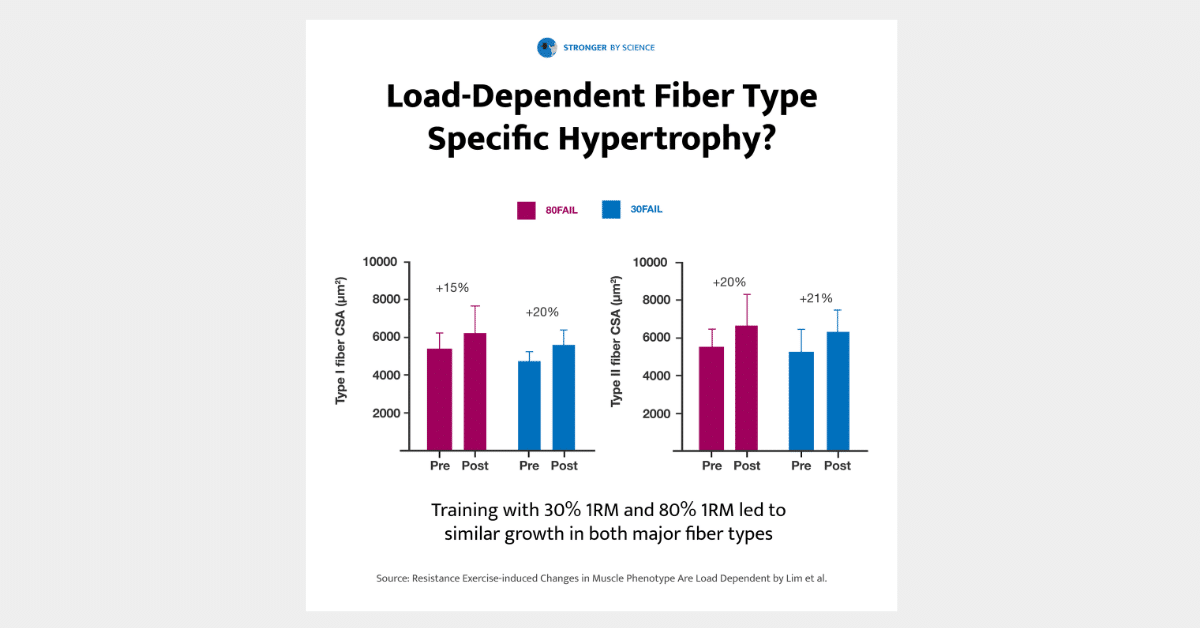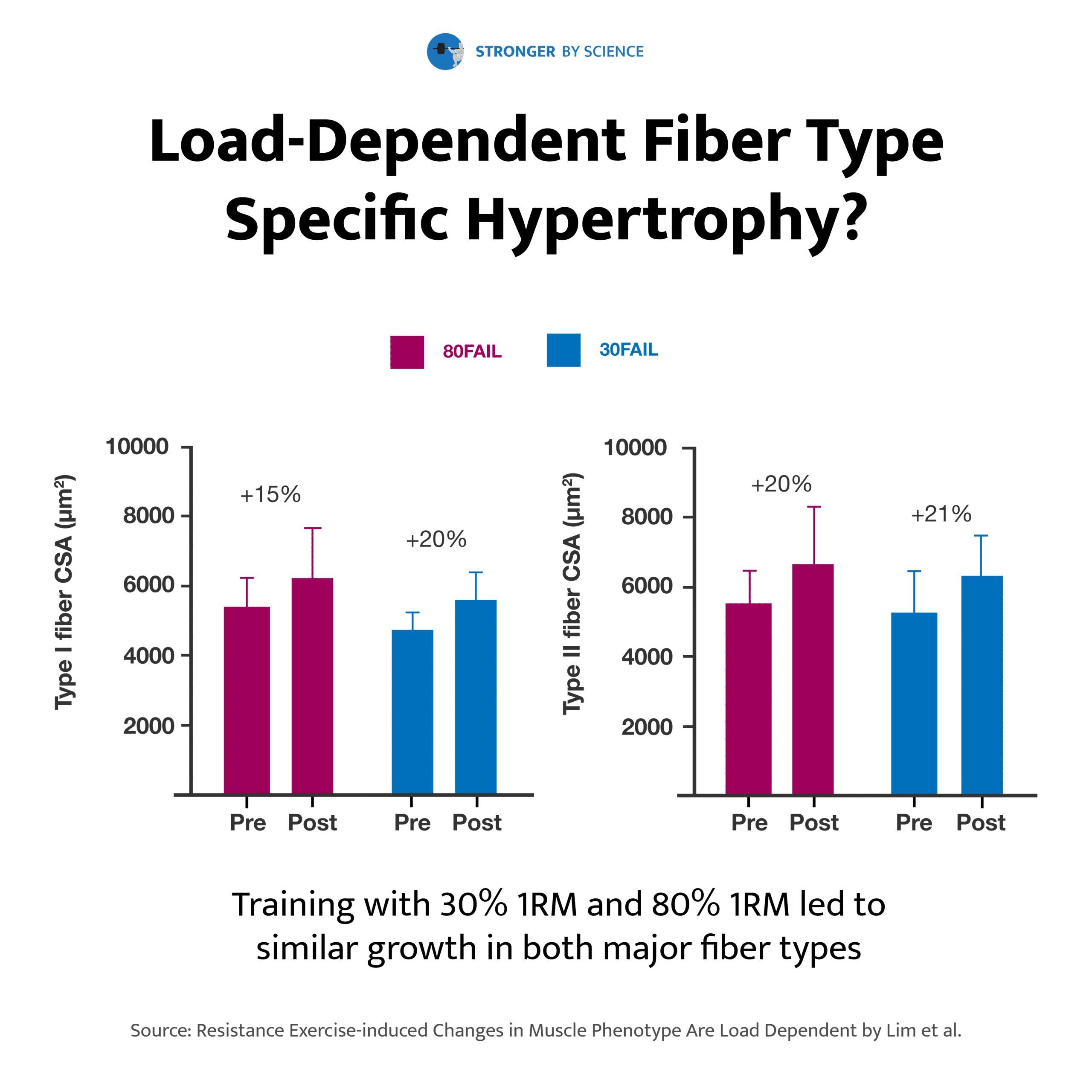There’s an enormous amount of evidence at this point indicating that as long as sets are taken to failure or close to failure, muscle growth is pretty similar when training with loads ranging from ~30% to ~80-85% of 1RM. However, many people still wonder whether heavier training is better for type II fiber growth, while lighter training is better for type I fiber growth. That’s not a completely illogical assumption to make, and it’s also not a closed question in the literature, since most studies comparing different training intensities only measure whole-muscle growth instead of fiber-type-specific growth.
I’m generally of the opinion that fiber-type-specific hypertrophy doesn’t occur to a meaningful degree under most circumstances. It’s only been clearly demonstrated once, in my opinion (“Type 1 Muscle Fiber Hypertrophy after Blood Flow-restricted Training in Powerlifters” by Bjørnsen et al.), with most studies not supporting its relevance. You can read more about the topic at strongerbyscience.com/muscle-fiber-type/
A recent study by Lim et al. adds to the body of evidence questioning the relevance of intensity-dependent fiber type specific hypertrophy. Subjects trained their quads with either 80% 1RM or 30% 1RM for three sets to failure for 10 weeks. Both conditions led to significant hypertrophy of both fiber types, with no significant differences between them.
The bottom line: I think there are practical reasons to vary rep ranges, but sticking to “classical” hypertrophy rep ranges probably isn’t significantly sacrificing growth of any particular fiber type. I think there are practical reasons to vary rep ranges, but you don’t need to on account of fears about neglecting a particular fiber type. Both type I and type II fibers seem to grow just fine with a wide variety of training intensities.





